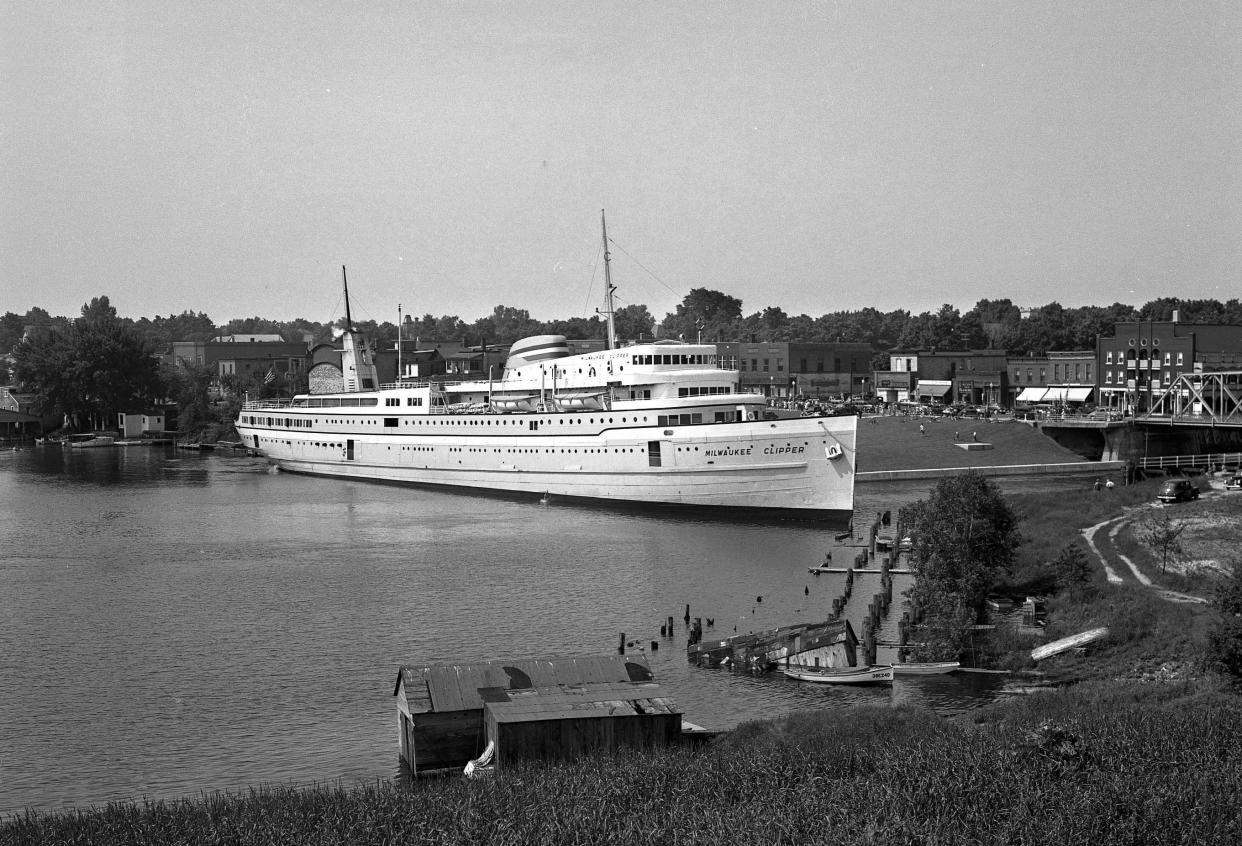Looking Back: Passenger vessels come to Charlevoix

CHARLEVOIX — Tenth in a series related to the new “Maritime History of Charlevoix, the City on Three Lakes” exhibit at the Charlevoix Historical Society’s Museum at Harsha House, 103 State St.
After 1887, when the Grand Hotel on Mackinac Island opened and more regional resort hotels followed suit, demand for travel to many of the ports of Lake Michigan began to increase rapidly. This, in turn, demanded larger passenger vessels to serve them, but in the beginning only medium-sized vessels, almost all made of wood, were available and could take almost two days to reach Mackinac from Chicago.
That changed when, in 1893, the mighty steel-hulled Manitou was put into service on the route, 274 feet of palatial magnificence, a symphony of Mexican mahogany, oak, brass, velvet, marble and glass. The boat was nicknamed “The Greyhound of the Great Lakes” because if its incredible speed. For the first three years, however, it headed from a stop in Frankfort directly to Harbor Springs, then the Straits. Those wishing to come to Charlevoix or Petoskey had to disembark in Harbor to catch an “annex steamer” that would take them to either port, and repeat the short journeys when they went home.
By 1896, the boat’s owners recognized that there was so much demand for Charlevoix that we were added to the schedule, the Manitou’s first arrival here being on June 21, 1896 to a huge welcoming crowd. It would subsequently pass through the channel hundreds of times, until 1933.
So successful was this addition that in 1898 the boat’s lower Lake Michigan stops were eliminated. The “Greyhound” was now able to cover the non-stop Chicago-Charlevoix leg in a record-breaking 20 hours. Smaller passenger steamers could take up to 40. The Manitou came into port six times a week, three times on the way up, and three times on the way down. In 1918, it was reported that over the past 20 years, on average, 75 percent of the tickets sold for the Manitou were destination Charlevoix.
The boat’s captain, in its later years, was William Finucan (b. 1859), one of the most esteemed and capable captains on the Great Lakes. He began his career on the smaller steamers Lawrence and City of Charlevoix, then was at the helm for the maiden voyages of the sister liners Illinois (1899) and Missouri (1904), which both came to Charlevoix over many years carrying both passengers and freight, often into December.
In 1906, Finucan was hired to pilot the Manitou, which he did for the next 15 years, except for 1918 when the liner was taken for unspecified duty in World War I. He even made Charlevoix his permanent home. His house was located on Clinton Street, currently the residence of Charlevoix mayor Lyle Gennett and his wife Gail. After years of unfaltering service and steadily increasing reputation because he treated his passengers so well, many of whom he got to know by name, Finucan died on Christmas Day 1921 after attending holiday services at the Catholic Church. He left his wife at the church for a social event, walked home with two of his children, strode from the street sidewalk toward his porch, and fell over dead into a snowbank before he reached the stairs, a very sad day in Charlevoix.
In contrast to the Manitou, Illinois, Missouri, plus the North and South Americans and a few others, the 361-foot Milwaukee Clipper came in only once, on June 24, 1943. Launched as the Juniata in December of 1904 to carry both passengers and freight, the sadly aging vessel was sold and refurbished around 1940, renamed, and devoted only to 350 passengers for Great Lakes cruising.
Charlevoix tried to get the Clipper to come in, but the company was reluctant because of our lack of dockage space for such a large vessel. Finally we somehow persuaded them. A lot of people here thought the Clipper would prove to be way too big for Round Lake. Well, they were right. After the boat turned around and headed for the city dock, the only way to position it to get the passengers off through the port aft gangway was to project the bow ahead until it almost touched the old dock pilings of the Charlevoix Lumber Company, seen here, today being only a few yards from the Edgewater Inn balconies. The boat was so big that anyone standing on the channel bridge could not see Round Lake. And its position totally blocked the channel to all maritime traffic for the few hours the Clipper was here. So once was enough for all concerned. Out the boat steamed, channel traffic resumed, and it never came back.
This article originally appeared on The Petoskey News-Review: Looking Back: Passenger vessels come to Charlevoix

